
Saddar: The Heartbeat of Karachi
Explore Saddar, the vibrant heart of Karachi, where colonial heritage meets bustling marketplaces and a rich culinary scene.
Saddar, located in the bustling city of Karachi, Pakistan, is a vibrant and historic neighborhood that offers a unique blend of cultural heritage and modern urban life. Known for its colonial-era architecture, Saddar is home to some of the city's most iconic landmarks. Walking through the streets, you will encounter a mix of British-era buildings, colorful markets, and contemporary establishments, making it a fascinating area to explore. One of the highlights of Saddar is the Empress Market, a bustling marketplace that has been a central part of Karachi's trading scene since the late 19th century. Here, you can find a wide variety of goods, from fresh produce and spices to textiles and handicrafts. The market is an excellent place to experience the local culture and pick up some unique souvenirs. Saddar is also known for its diverse culinary scene. The neighborhood is dotted with numerous eateries offering a range of Pakistani and international cuisines. From street food vendors serving delicious snacks to high-end restaurants offering gourmet meals, there is something to satisfy every palate. Don't miss the chance to try some traditional Pakistani dishes, like biryani and kebabs, while you're here. In addition to its markets and food, Saddar is rich in history and culture. The area is home to several museums, art galleries, and theaters that showcase the vibrant arts scene of Karachi. Be sure to visit the National Museum of Pakistan, which houses an impressive collection of artifacts that tell the story of the nation's history and heritage.
Local tips in Saddar
- Visit Empress Market early in the morning to avoid crowds and get the freshest produce.
- Wear comfortable walking shoes as the streets can be crowded and uneven.
- Carry cash as many local vendors do not accept credit cards.
- Try local street food but ensure it is from a hygienic vendor.
- Keep an eye on your belongings as the area can be busy and pickpockets are not uncommon.
Saddar: The Heartbeat of Karachi
Saddar, located in the bustling city of Karachi, Pakistan, is a vibrant and historic neighborhood that offers a unique blend of cultural heritage and modern urban life. Known for its colonial-era architecture, Saddar is home to some of the city's most iconic landmarks. Walking through the streets, you will encounter a mix of British-era buildings, colorful markets, and contemporary establishments, making it a fascinating area to explore. One of the highlights of Saddar is the Empress Market, a bustling marketplace that has been a central part of Karachi's trading scene since the late 19th century. Here, you can find a wide variety of goods, from fresh produce and spices to textiles and handicrafts. The market is an excellent place to experience the local culture and pick up some unique souvenirs. Saddar is also known for its diverse culinary scene. The neighborhood is dotted with numerous eateries offering a range of Pakistani and international cuisines. From street food vendors serving delicious snacks to high-end restaurants offering gourmet meals, there is something to satisfy every palate. Don't miss the chance to try some traditional Pakistani dishes, like biryani and kebabs, while you're here. In addition to its markets and food, Saddar is rich in history and culture. The area is home to several museums, art galleries, and theaters that showcase the vibrant arts scene of Karachi. Be sure to visit the National Museum of Pakistan, which houses an impressive collection of artifacts that tell the story of the nation's history and heritage.
Iconic landmarks you can’t miss
Jahangir Park
Explore Jahangir Park, Karachi's serene urban oasis featuring lush gardens, dinosaur statues, and a tranquil atmosphere perfect for relaxation and exploration.

National Museum Of Pakistan
Discover the National Museum of Pakistan, a cultural treasure trove showcasing the rich history and diverse heritage of the nation in Karachi.

Wazir Mansion ( Quaid-e-Azam Place)
Explore Wazir Mansion, the birthplace of Muhammad Ali Jinnah, and immerse yourself in the rich history of Pakistan's independence.

Jamia Masjid Saleh Saddar
Experience the architectural beauty and spiritual ambiance of Jamia Masjid Saleh Saddar, a must-visit mosque in Karachi's vibrant Saddar district.

Kabootar Chowk
Discover the vibrant history and culture at Kabootar Chowk, a lively historical landmark in the heart of Karachi, showcasing the city's unique essence.

Christ the King Monument
Explore the rich cultural heritage of Karachi at the stunning Christ the King Monument, a must-visit landmark for every traveler.

1882 British Building The Eduljee Dinshaw Charitable Dispensary
Discover the rich history of Karachi at the Eduljee Dinshaw Charitable Dispensary, an architectural gem near Empress Market.

The Chimney
Explore The Chimney, a historic landmark in Karachi, showcasing the city’s architectural heritage and vibrant local culture.
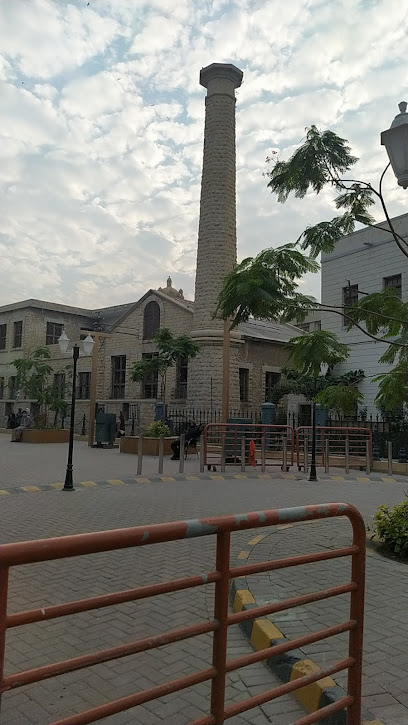
Public Sitting Area Saddar
Experience the serene charm of Public Sitting Area Saddar, a hidden gem in Karachi perfect for relaxation and cultural immersion.

Parsi Dar-e-Meher
Discover the serene beauty and cultural heritage of Parsi Dar-e-Meher, a tranquil place of worship in Karachi, reflecting Parsi architectural elegance.

Unmissable attractions to see
Mazar-e-Quaid-e-Azam
Explore the majestic Mazar-e-Quaid-e-Azam, Karachi's iconic mausoleum dedicated to the founder of Pakistan, Muhammad Ali Jinnah.

Jahangir Park
Discover the beauty and tranquility of Jahangir Park, a must-visit urban oasis in Karachi, perfect for relaxation and family fun.

Quaid e Azam House Museum
Discover the rich history of Pakistan at the Quaid-e-Azam House Museum, the former residence of Muhammad Ali Jinnah, showcasing his impactful legacy.

Wazir Mansion ( Quaid-e-Azam Place)
Explore the historical Wazir Mansion, the birthplace of Muhammad Ali Jinnah, and delve into Pakistan's rich heritage in Karachi.

St. Patrick's Cathedral
Explore the architectural splendor and serene ambiance of St. Patrick's Cathedral, a historical gem in the heart of Karachi, Pakistan.
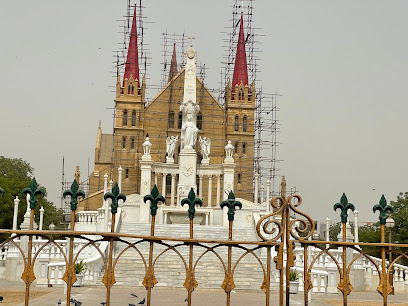
Jang Time's Monument
Discover the historic charm of Jang Time's Monument in Saddar Karachi, where architecture meets rich cultural heritage in a vibrant urban setting.

Christ the King Monument
Explore the Christ the King Monument in Karachi, a historical landmark showcasing stunning architecture and rich cultural heritage in a vibrant urban setting.

Public Sitting Area Saddar
Experience the vibrant local culture at Public Sitting Area Saddar, a tranquil spot in Karachi perfect for relaxation and people-watching.

Essential places to dine
Zahid Nihari Restaurant
Experience authentic Pakistani flavors at Zahid Nihari Restaurant in Saddar - a must-visit culinary destination in Karachi.

Chullu Kabab Sistani
Experience authentic Iranian cuisine at Chullu Kabab Sistani - where every bite tells a flavorful story.

Kaiser Restaurant
Experience the rich flavors of Karachi at Kaiser Restaurant - where traditional meets contemporary in every delicious dish.

Noorebahar Restaurant (old Naubahar Restaurants)
Experience authentic Pakistani cuisine at Noorebahar Restaurant in Saddar Town, Karachi – where tradition meets flavor in every dish.

Ar-Rehman Biryani Center
Discover authentic Karachi biryani at Ar-Rehman Biryani Center—where every bite tells a flavorful story.

Oriental restaurant and Nihari house
Experience authentic Pakistani cuisine at Oriental Restaurant & Nihari House in Karachi - where tradition meets flavor.

Sartaj Restaurant
Discover authentic Pakistani flavors at Sartaj Restaurant in Saddar, Karachi - a top destination for food lovers seeking traditional cuisine.

QUETTA STAR HOTEL (famous Restaurant)
Experience authentic Pakistani cuisine at Quetta Star Hotel in Karachi – where flavor meets tradition in a vibrant setting.
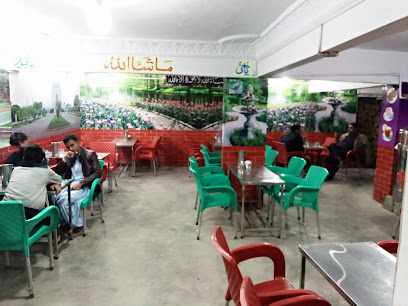
کیفے نیوملت ریسٹورنٹ
Discover the essence of Karachi's culinary scene at Café Neomult – where tradition meets modernity in every delicious bite.

Karachi Pakistan
Experience Karachi's vibrant culinary scene through delightful small plates that capture the essence of this multicultural city.

Markets, malls and hidden boutiques
Saddar Bazar
Explore the vibrant Saddar Bazar in Karachi, a bustling hub of shopping, culture, and culinary delights that captures the essence of local life.

Ibrahim Store
Discover high-quality yarns and knitting supplies at Ibrahim Store in Karachi's Saddar district, a must-visit for craft enthusiasts.

Kayazar Online Store
Explore Kayazar Online Store in Karachi for a delightful shopping experience featuring clothes, jewelry, and beauty products from local artisans.

Karimi Store
Explore the vibrant Karimi Store in Bohra Bazaar, Karachi for exquisite fabrics and stylish clothing that reflect the rich heritage of Pakistan.

Khawaja Store
Explore the vibrant Khawaja Store in Saddar, Karachi, where tradition meets modern shopping in a unique cultural experience.

Novelty Emporium
Discover the exquisite craftsmanship of silver artifacts at Novelty Emporium, a cultural landmark in Saddar, Karachi.
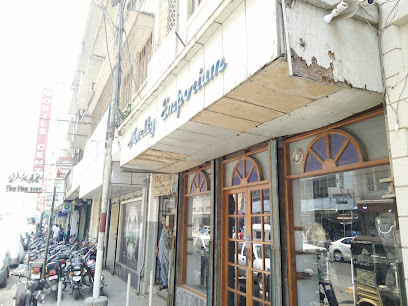
Unique Jewellers
Explore Unique Jewellers in Saddar, Karachi for exquisite craftsmanship, authentic jewelry, and a taste of local artistry.

1
Discover the vibrant culture of Karachi at this charming general store, offering local delicacies and unique souvenirs in the heart of Saddar.

Nomani Store
Explore the charm of Karachi at Nomani Store, where you'll find unique gifts, herbal remedies, and local literature in a welcoming atmosphere.

Unique corner
Discover Unique Corner in Karachi: A Clothing Store with Local Flair and Global Style Offering Unparalleled Fashion Choices.
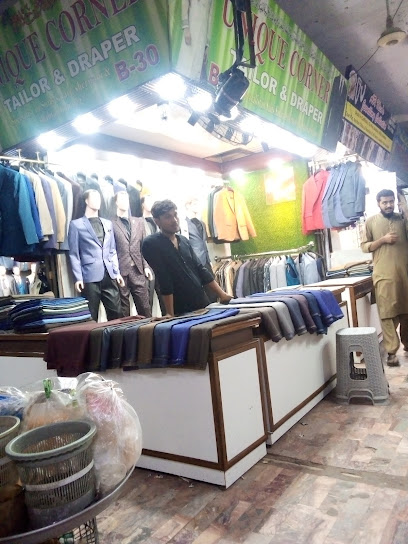
Essential bars & hidden hideouts
Five star wine shop
Explore an exquisite selection of fine wines at Karachi's premier five-star wine shop, where every bottle tells a story.

Wine Shop
Explore Karachi's Wine Shop, a charming wine bar offering an exquisite selection of local and international wines in a cozy atmosphere.

Sindh High Court Old Bar
Experience the rich history and vibrant atmosphere at Sindh High Court Old Bar in Karachi, a must-visit destination for every traveler.

Shah Juice
Discover the refreshing world of Shah Juice in Karachi, where vibrant flavors and a lively atmosphere await every traveler.

NAB Court Karachi
Discover the lively atmosphere and rich culture at NAB Court Karachi, a premier bar in the heart of Saddar, perfect for unwinding and socializing.

FIZZYLICIOUS
Discover the vibrant energy of Fizzylicious, Karachi’s premier bar for unique drinks and a lively atmosphere.

VIP Juice Bar
Discover a refreshing oasis in Karachi at VIP Juice Bar, where vibrant flavors and a lively atmosphere await every visitor.

Sadder soda center
Discover the vibrant atmosphere of Sadder Soda Center, a premier bar in Karachi's Saddar district, serving refreshing drinks and local culture.

SHAFI PAN SHOP
Discover the authentic flavors of Karachi at Shafi Pan Shop, where delicious pan and lively ambiance blend perfectly.

شریف سائیلٹ پوائنٹ
Experience Karachi's nightlife at شریف سائیلٹ پوائنٹ, a lively bar offering a unique blend of local culture and vibrant atmosphere.

Local Phrases
-
- Helloسلام
[salaam] - Goodbyeخدا حافظ
[khuda hafiz] - Yesہاں
[haan] - Noنہیں
[nahin] - Please/You're welcomeبراہ کرم
[baraah karam] - Thank youشکریہ
[shukriya] - Excuse me/Sorryمعذرت چاہتا ہوں
[maazrat chahta hoon] - How are you?آپ کیسے ہیں؟
[aap kaise hain?] - Fine. And you?ٹھیک ہوں۔ آپ؟
[theek hoon. aap?] - Do you speak English?کیا آپ انگریزی بولتے ہیں؟
[kya aap angrezi bolte hain?] - I don't understandمجھے سمجھ نہیں آیا
[mujhe samajh nahi aaya]
- Helloسلام
-
- I'd like to see the menu, pleaseبراہ کرم مینو دیکھنا ہے
[baraah karam menu dekhna hai] - I don't eat meatمیں گوشت نہیں کھاتا
[main gosht nahi khaata] - Cheers!چیرز!
[cheers!] - I would like to pay, pleaseبراہ کرم ادا کرنا ہے
[baraah karam ada karna hai]
- I'd like to see the menu, pleaseبراہ کرم مینو دیکھنا ہے
-
- Help!مدد!
[madad!] - Go away!چلے جاؤ!
[chale jao!] - Call the Police!پولیس کو بلاؤ!
[police ko bulao!] - Call a doctor!ڈاکٹر کو بلاؤ!
[doctor ko bulao!] - I'm lostمیں گم ہو گیا ہوں
[main gum ho gaya hoon] - I'm illمیں بیمار ہوں
[main beemar hoon]
- Help!مدد!
-
- I'd like to buy...میں خریدنا چاہتا ہوں...
[main khareedna chahta hoon...] - I'm just lookingمیں صرف دیکھ رہا ہوں
[main sirf dekh raha hoon] - How much is it?یہ کتنا ہے؟
[yeh kitna hai?] - That's too expensiveیہ بہت مہنگا ہے
[yeh bohat mehnga hai] - Can you lower the price?کیا آپ قیمت کم کرسکتے ہیں؟
[kya aap qeemat kam kar sakte hain?]
- I'd like to buy...میں خریدنا چاہتا ہوں...
-
- What time is it?وقت کیا ہوا ہے؟
[waqt kya hua hai?] - It's one o'clockایک بجے ہیں
[aik baje hain] - Half past (10)(10) کو آدھا گھنٹہ ہوا
[(10) ko aadha ghanta hua] - Morningصبح
[subah] - Afternoonدوپہر
[dopahar] - Eveningشام
[shaam] - Yesterdayکل
[kal] - Todayآج
[aaj] - Tomorrowکل
[kal] - 1ایک
[aik] - 2دو
[do] - 3تین
[teen] - 4چار
[chaar] - 5پانچ
[paanch] - 6چھے
[chhay] - 7سات
[saat] - 8آٹھ
[aath] - 9نو
[no] - 10دس
[das]
- What time is it?وقت کیا ہوا ہے؟
-
- Where's a/the...?کہاں ہے...
[kahan hai...] - What's the address?پتہ کیا ہے؟
[pata kya hai?] - Can you show me (on the map)?کیا آپ مجھے دکھا سکتے ہیں (نقشہ پر)؟
[kya aap mujhe dikhla sakte hain (naqsha par)?] - When's the next (bus)?اگلی (بس) کب ہے؟
[agli (bus) kab hai?] - A ticket (to ....)ایک ٹکٹ (.... تک)
[aik ticket (... tak)]
- Where's a/the...?کہاں ہے...
History of Saddar
-
Saddar was established during the British colonial era in the 19th century, serving as the administrative and commercial center of Karachi. The area was designed with wide boulevards and colonial architecture, reflecting the British influence on urban planning. Notable structures from this period include the iconic Frere Hall, built in 1865, which served as a public library and is now a cultural landmark.
-
In the early 19th century, Karachi was transformed from a small fishing village into a bustling port city. Saddar played a crucial role in this transformation, becoming the hub for trade and commerce. The construction of the Karachi Port in 1854 facilitated trade routes and attracted merchants from various regions, contributing to the multicultural fabric of the neighborhood.
-
Throughout the 20th century, Saddar evolved into a melting pot of cultures and communities. Its markets, such as the famous Saddar Bazaar, became vibrant centers for trade, reflecting the diverse ethnicities of Karachi. The area is known for its rich culinary offerings, showcasing a fusion of local and regional cuisines influenced by various migrant populations.
-
The 1947 Partition of India led to significant demographic changes in Saddar, as many Hindu and Sikh residents migrated to India, while Muslim refugees from India settled in the neighborhood. This shift transformed the cultural landscape of Saddar, contributing to its identity as a predominantly Muslim area, while also leaving a legacy of multiculturalism that persists today.
-
In recent decades, Saddar has faced challenges due to urbanization and economic shifts. The area has seen a mix of redevelopment efforts and preservation initiatives aimed at maintaining its historical character. Despite these challenges, Saddar continues to be a bustling commercial hub, with a blend of old and new, attracting visitors and locals alike to its rich history and culture.
Saddar Essentials
-
Saddar is centrally located in Karachi, making it accessible from various parts of the city. From Jinnah International Airport, you can take a taxi or an app-based ride service, which takes approximately 30 to 45 minutes depending on traffic. If you are coming from other neighborhoods like Clifton or Gulshan-e-Iqbal, local buses and rickshaws are available, or you can opt for a taxi for more convenience.
-
Saddar is best explored on foot due to its bustling streets and numerous attractions. However, if you prefer public transport, the Karachi Circular Railway has a station at Saddar, offering an affordable way to travel to other neighborhoods. Buses and minibuses (known as 'coasters') also operate in the area, and rickshaws are a popular option for short distances. Bicycles can be rented from various local shops, but be cautious of the traffic.
-
Saddar is generally safe for tourists during the daytime; however, visitors should remain aware of their surroundings. Certain areas, particularly around the train station and in less crowded streets at night, may experience higher crime rates. It is advisable to avoid carrying large amounts of cash and to keep valuables out of sight. Always travel in groups when possible and stay vigilant.
-
In case of an emergency, dial 15 for police assistance or 1122 for ambulance services. Hospitals like Liaquat University Hospital and Civil Hospital are nearby for medical emergencies. It is advisable to have travel insurance that covers medical issues. For minor health concerns, pharmacies are available throughout Saddar.
-
Fashion: Do dress modestly, especially in religious and conservative areas. Avoid shorts and revealing clothing. Religion: Do respect local customs; when visiting mosques, remove your shoes and dress appropriately. Public Transport: Do give your seat to the elderly or disabled. Don't engage in loud conversations. Greetings: Do greet with a friendly 'As-Salamu Alaikum' (peace be upon you). Eating & Drinking: Do try local foods at street vendors. Don't drink alcohol in public spaces as it is frowned upon.
-
To experience Saddar like a local, visit the bustling Empress Market for fresh produce and local delicacies. Explore the historical buildings and architecture in the area, such as the Mohatta Palace. Engage with local shopkeepers and vendors; they often enjoy sharing stories. For a unique experience, take a stroll along the Saddar market streets in the evening when the area comes alive with street food vendors.
Nearby Cities to Saddar
-
Things To Do in Hyderabad
-
Things To Do in Jaisalmer
-
Things To Do in Rajkot
-
Things To Do in Quetta
-
Things To Do in Ahmedabad
-
Things To Do in Jodhpur
-
Things To Do in Udaipur
-
Things To Do in Vadodara
-
Things To Do in Multan
-
Things To Do in Pushkar
-
Things To Do in Sur
-
Things To Do in Nashik
-
Things To Do in Mumbai
-
Things To Do in Muscat
-
Things To Do in Jaipur













